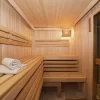With the ubiquity of smartphone cameras, it has become easier than ever to dabble in photography. And who doesn’t enjoy sharing cute photos of their pets with friends and family? But what if you’re more interested in taking the next steps, going from amateur snapshots to professional shoots and entering the always burgeoning photo business. It can be easy. But, you’ll need a few pieces of equipment to ensure that your new business succeeds.
All professional photography businesses will need a few essential pieces of equipment such as a high-quality camera, a computer with editing software, and an efficient printer. In addition, a dedicated workspace and a few other essentials (such as business insurance) can make all the difference.
And the best part? You don’t need much more than that to get a photography business off and running. So be sure to read on for details on what to look for on each essential piece below.
Table of Contents
A Professional-Grade Camera
The essential piece of equipment for any photography business is a camera. It is more often than not a digital camera, as film photography has largely gone by the wayside. Canon and Sony make high-quality cameras that professional photographers around the world use. So be ready to spend upwards of $3,000 on a good camera. (And such prices are often without extra lenses or equipment, like memory cards or batteries.)
A Few Businesses Essentials
Besides tangible equipment such as cameras and tripods, a photography business will also need a few other business essentials such as insurance, a website, and other marketing materials like business cards. Some of these costs will be minimal and infrequent (business cards), while others can be substantial and ongoing (website maintenance).
Of course, there will also be aspects such as photographer insurance costs to consider. Many photographers may think that insurance is unnecessary. Yet, regulations often stipulate that businesses must have it. This isn’t a bad thing, as having comprehensive auto, property, and liability coverage is always a bright idea for any business owner. (Besides, having insurance when you need it is always better than the alternative.) In the grand scheme of things, insurance costs are often quite affordable and can be tailored to meet your business’s needs.
A Computer with Capable Photo Editing Software
Photoshop has become such an essential tool that few people realize that it is a brand name like Kleenex. The truth is, a computer that can edit photos is just as important a tool for a photographer as a camera is. Not only will good software help gloss over imperfections, but they will also be able to automate many tedious tasks—like color correcting.
When it comes to Mac or PC, there is little difference for photography. Use whatever computer has an operating system that you are comfortable with. Photoshop is truly a must-have, but for those looking for a cheaper alternative, Adobe offers Photoshop Elements, which is a pared-down version of the standard software that is still highly capable.
A Dependable Printer
Want to be able to share your work? You’ll need a printer. The fastest and easiest way for a new photography business to advertise is to print quality reproductions of its work. This could be something as cheap as a repurposed printer you already happen to own. You will need to use pro-level inks and photo paper to have an end result that people will want to frame. Inkjet on copy paper won’t cut it here.
Quality new printers from brands such as Canon, HP, and Kodak can be had for around $100. There is no need to go with a new printer that has superfluous capabilities, such as Bluetooth connections. In general, it is much more essential to find a printer that has a suitable DPI. This stands for dots per inch, and the higher the number, the clearer the image being reproduced will appear. Anything over 1200 DPI is okay to start. Lastly, look for models that offer fast print speeds.
A Comfortable Place to Work
Lastly, you’ll need a place to do business. Many photographers these days work out of a home studio with little more than a desk to put their laptop on. The days of needing an extensive area dedicated to one’s home studio are long since gone. Just make sure the space is comfortable enough for editing sessions and has easy access to a printer, and you should be good to go.
The one exception is probably a darkroom. This is especially true if you plan to specialize in large format or antique film photography. But even if you will be working primarily with film, you may not need to dedicate a ton of space to a darkroom. There are many inventive ways to create a temporary darkroom elsewhere in your living space.
Don’t Forget to Bring Ambition!
Lastly, don’t depend too much on your gear. In short, anyone can buy a fancy camera and computer with editing software and call themselves an artist. The difference will be the ambition and artistry that you bring to the craft. So, while you’re gathering the necessary supplies, don’t forget that last necessary ingredient—yourself! Good luck!







